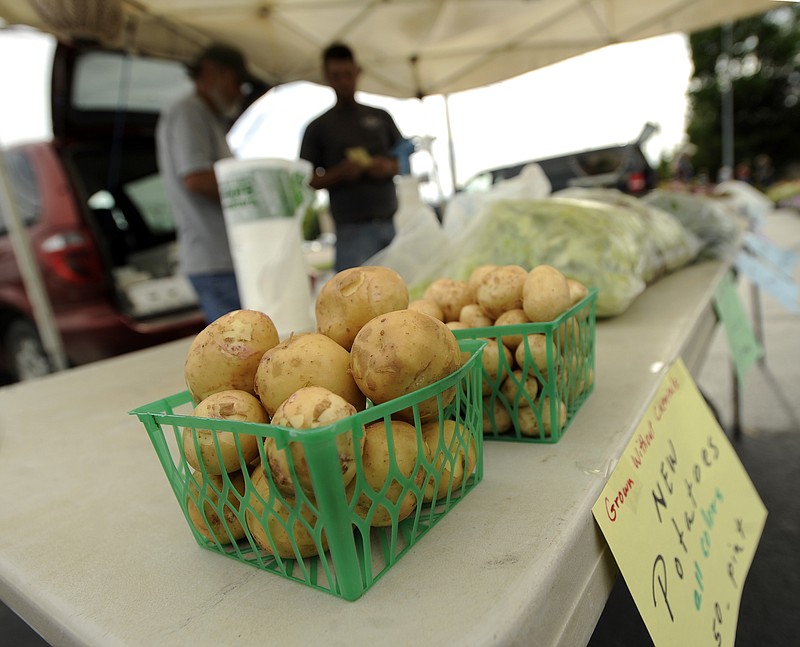Although St. Patrick's Day is the traditional day to plant potatoes, Mid-Missouri weather usually does not cooperate. This year was no exception, at least not in my garden.
There have not been too many years I have been able to meet that deadline. So I usually try to get mine in the ground at least by Good Friday. The ideal time frame for our area is March 20 through April 10, which happens to be Good Friday this year. The way our weather is acting, I hope it will dry out by then.
Now might be a good time to start looking for seed potatoes since it is a good idea to place seed potatoes in a bright warm spot about a week before you want to plant. This will help break the spuds' dormancy and assure they grow quickly when you put them into the still-cool spring soil.
Last year, I found out about "determinate and indeterminate" potatoes. I had always heard about determinate and indeterminate tomatoes, but I had never heard of potatoes having these characteristics. I am not sure how I missed this in 50 years of gardening, but, sure enough, determinate potatoes are varieties with tubers that grow in just one layer. Because they are going to be on just the one layer, the plants do not require mounding the soil around them. The potatoes that are called "early potatoes" are usually determinate and ready in about 70-90 days.
Indeterminate or late season potatoes, on the other hand grow in multiple layers, so it is important to mound soil around the plants. This will give you a better yield. Indeterminate potatoes produce late crops in about 110-135 days.
To grow determinate potatoes, sow them in loose soil to a depth of about 4 inches. Use mulch to prevent weed growth and to prevent the tubers from being exposed to the sun, which can cause the tubers to turn green and somewhat toxic. Some varieties of determinate potatoes are Norland, Fingerling, Yukon Gold and Superior.
To grow indeterminate potatoes, start by covering them with 4 inches of loose soil. When the plants have reached about 6 inches high, add several inches of soil, straw or dead leaves until there is just about 2 inches of the plant sticking up. Continue adding layers as the plant grows.
Because of the multiple layers of tubers with indeterminate potatoes, these varieties are well suited to potato boxes, towers or other vertical means of growing. These are good for small spaces because they allow you to grow up and still get a good yield of potatoes. Some varieties of indeterminate potatoes are Snowden, Russet Burbank and Bancock Russet, as well as the ever popular Kennebec.
This explains why I have never had much luck with a potato tower or other containers. I almost always grow early potatoes for two reasons. One, I am not as patient as I should be when waiting for produce. Two, potatoes do a little better maturing in cooler weather, and you can't always trust Mid-Missouri weather to stay cool long in the early summer.
The past couple of years I planted red Norland potatoes in straw. I thought it was the straw method that was causing a smaller yield. Now, I believe it is just the way the Norlands produce. I no longer waste time mounding layers of straw; just a good covering and I'm done.
There is always something new going on in the garden. I hope this information will be helpful as you pick this year's variety of potatoes to plant.
Happy gardening.
Peter Sutter is a lifelong gardening enthusiast and a participant in the MU Extension's Callaway County Master Gardener program. Gardening questions can be sent to [email protected].

